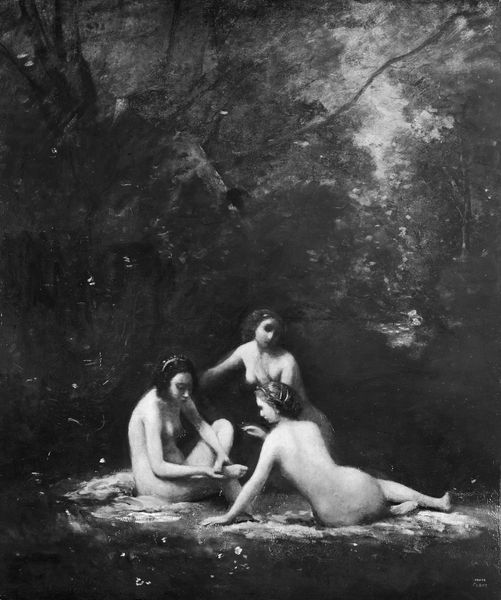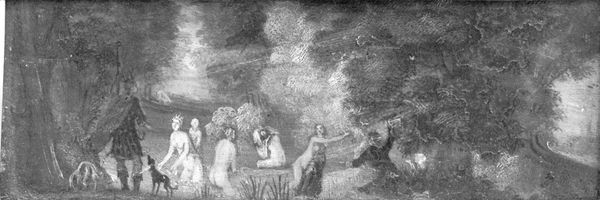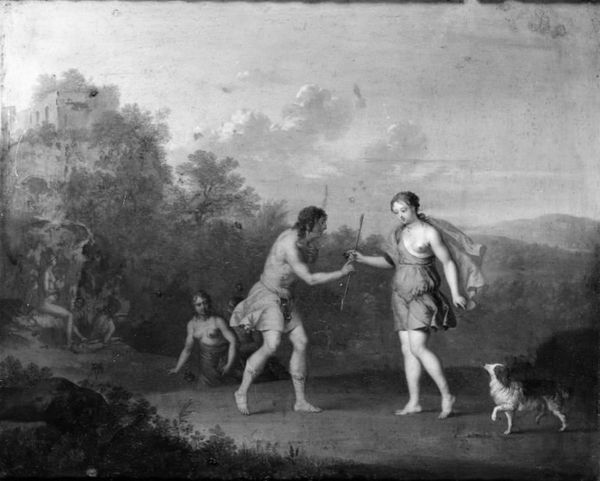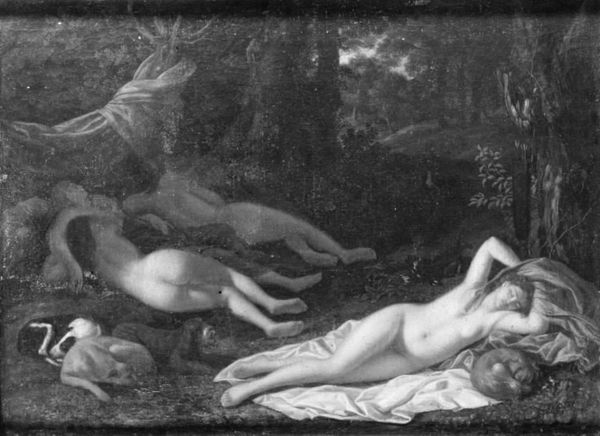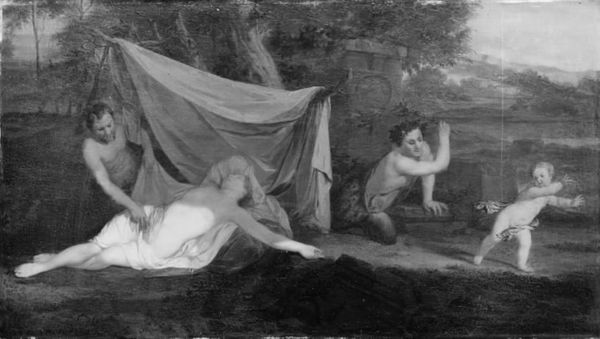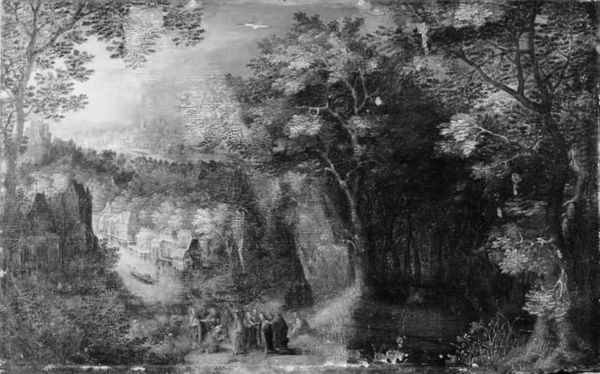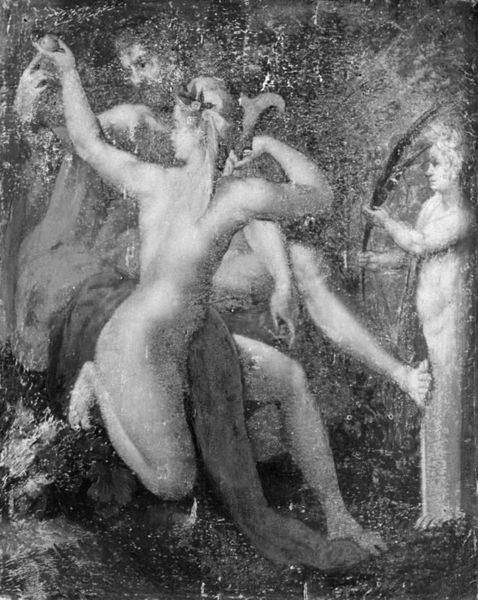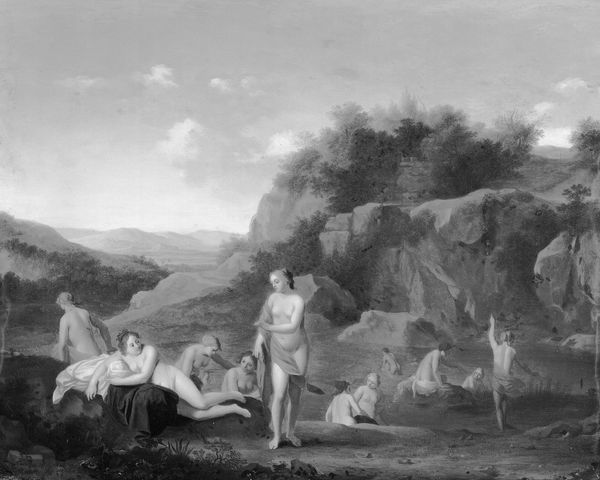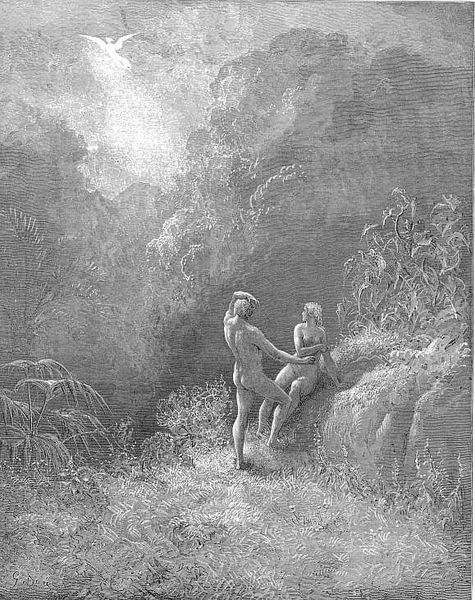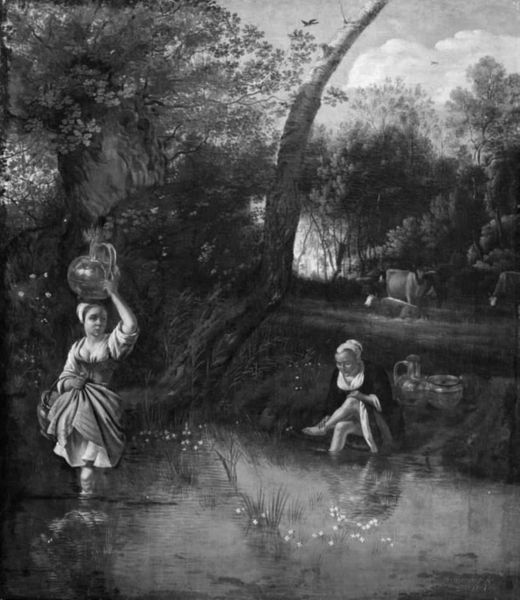
painting, wood
#
baroque
#
painting
#
landscape
#
monochrome colours
#
black and white
#
monochrome photography
#
wood
#
monochrome
#
nude
#
monochrome
Dimensions: 17.5 cm (height) x 21.5 cm (width) (Netto)
Curator: Immediately, this work presents such a curious dichotomy: a somber palette depicting what should be a joyous, perhaps mischievous, scene. Editor: Let's set the stage for our listeners. We are looking at "Diana and her Attendants" by Cornelis van Poelenburch, believed to have been painted sometime between 1609 and 1667. It’s rendered in oil on wood and currently resides at the SMK, Statens Museum for Kunst. Curator: Oil on wood--a surprising choice! But appropriate for a wooded theme, I suppose. There's a monochrome quality to the painting that feels stark despite its pastoral subject. What social statements about classical female figures and female communities are expressed in the monochrome rendering? Editor: Van Poelenburch, working within the Dutch Baroque tradition, often engaged with classical themes, popular at the time, through a lens influenced by the social and cultural history of his environment. The choice of Diana, the goddess of the hunt and wilderness, is significant, representing both power and independence. The display and perception of nudity were, of course, impacted by socio-political perceptions about female representation. Curator: Precisely. Diana's perceived power always has to be evaluated through the lens of patriarchal narratives. The gaze, even when seemingly internal among the women themselves, still carries the weight of a male dominated art world. Is the goddess truly in control or merely performing within an accepted framework? This monochrome interpretation flattens nuances in a way, denying vibrant life to their figures as it challenges their agency. Editor: It's also crucial to consider the intended audience. Works depicting classical, and biblical, scenes often served to legitimize the status and taste of wealthy patrons and even states and religious insitutions; reinforcing specific moral values. Curator: The act of viewing is then intertwined with reinforcing certain social orders, reducing it to simply the male perspective. Van Poelenburch’s depiction becomes less about innocent, playful retreat into the wilderness, and instead offers itself as commentary on what is seen and how one perceives women. Editor: The location of its display in museums throughout time affects its interpretations across time periods. Each new display shapes an audience's comprehension. I appreciate you steering our discussion towards its more philosophical meanings in this monochrome composition. Curator: Likewise, your spotlight on the artistic conventions broadens how one can see its historical relevance.
Comments
No comments
Be the first to comment and join the conversation on the ultimate creative platform.

